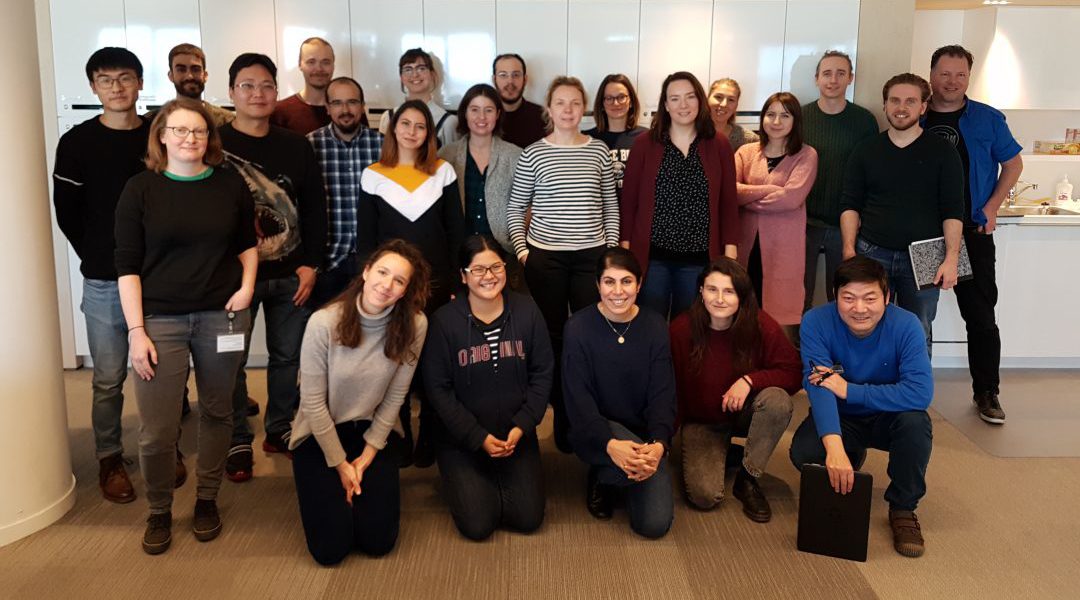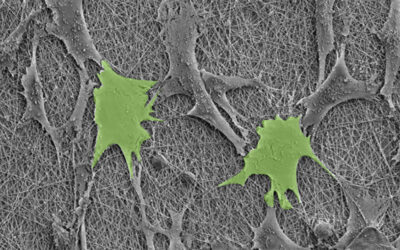Pamela Habibović obtained her Ph.D. degree in 2005 from the University of Twente, the Netherlands. She did her post-doctoral research at the Children’s Hospital/Harvard Medical School in Boston and another at McGill University in Montreal. In 2008, she returned to the Netherlands and led a research group at the University of Twente’s MIRA Institute for Biomedical Technology and Technical Medicine.
In 2014, she moved to Maastricht University and became full professor of inorganic biomaterials, becoming a founding partner and executive team member of MERLN Institute for Technology-Inspired Regenerative Medicine, as well as chair of MERLN’s Department of Instructive Biomaterials Engineering.
The main research of her group revolves around the development of smart, instructive biomaterials for regenerative medicine. She serves as an editorial board member of Advanced Healthcare Materials.
In this interview, Prof. Pamela Habibović shares her research experience, her life outside research, and her opinion on Advanced Healthcare Materials (AHM) with Advanced Science News.
1. Could you briefly introduce your research?
The research of my group revolves around the development of smart, instructive biomaterials for regenerative medicine. For example, in the past two decades, we have extensively published on the development of synthetic biomaterials that can successfully replace a patient’s own bone, in treating clinically challenging bone defects. We have shown that by tweaking the chemical and structural properties of the surface of calcium phosphate ceramics, it is possible to render them osteoinductive, i.e., able to trigger new bone formation in the body. Moreover, we have shown that bioinorganics, such as cobalt, strontium, and zinc can be used as inexpensive alternatives to growth factors in controlling processes related to bone regeneration. Our current work uses advanced proteomics techniques to understand the mechanisms between biomaterials and their biological environment and then to use these mechanisms as a basis for design of new materials. Moreover, we are developing methods based on microfluidics and combinatorial chemistry, with the specific aim to produce new biomaterials and study cell-biomaterial interactions in a more biomimetic and high-throughput manner. Finally, we are using nanomaterials as building blocks for developing highly controlled functional biomaterials for regenerative medicine.
2. Which piece of work are you most proud of? Which piece of work is your favorite?
Our work on osteoinductive calcium phosphate ceramics has contributed to the development of a product for spinal fusion surgery that is now clinically used in over 30 000 patients worldwide. Direct societal impact of this work is something I am proud of. My favorite piece of work is probably the study published in Advanced Materials in 2016 in which we have used innovative tools from the field of microtechnology to decouple structural from chemical properties of osteoinductive calcium phosphate ceramics in an attempt to better understand the mechanism behind the osteoinduction phenomenon.
3. Could you share some interesting moment in your research with us?
I cannot pick one, but every time when a student comes to say that an experiment was successful after (often many) unsuccessful attempts, is a moment to remember, because that is what makes science so beautiful.
4. What is your hobby? What would you like to work on if not science?
As a child, my dream was to become an anthropologist. I clearly ended up doing something else, but the field of anthropology still fascinates me. I like to cook, so I would probably enjoy running a small restaurant. And to relax, I love long runs in the winter.
5. What do you think is the most important characteristics/personality for a researcher?
Creativity is important for all aspects of research, from the conception of an idea to the writing of an article.
6. Could you give some suggestions to graduate students or junior researchers?
Always try to place your work into a larger perspective. This is not only helpful when deciding next steps in your research but also a great way to generate new ideas.
7. As the board member of AHM, what is your expectation for this journal?
I expect the journal to remain among the top journals in the field of biomedical/healthcare materials by attracting and publishing novel, creative research in the field. One way to do this is to invest in researchers at early career stages by providing trainings on scientific publishing and involving them as reviewers.
8. In your opinion, which topic in AHM should be strengthened in the future?
I am of the opinion that developments of materials science in the biomedical field are much slower than in many other fields, such as aerospace, energy, etc. I also think that we should make more use of these developments and try to implement them for applications in healthcare materials. Therefore, I would like to read more papers in AHM about studies in which materials and technologies from other fields are used or implemented in the biomedical field.

















